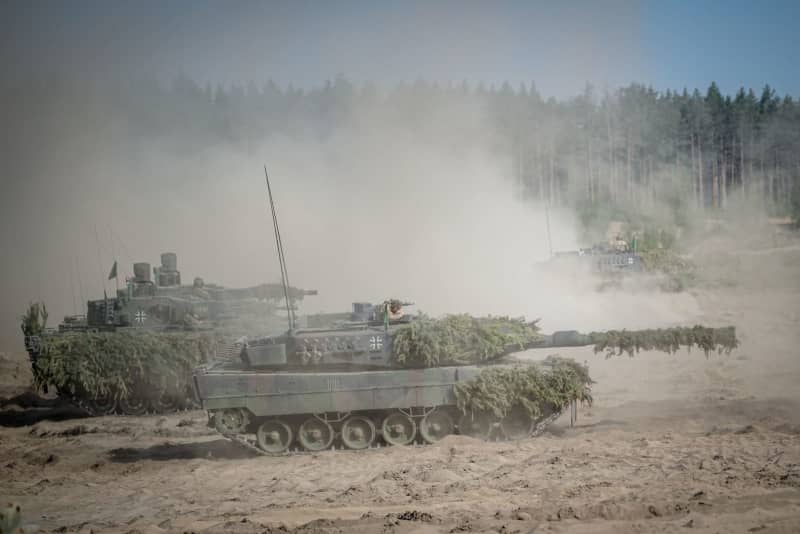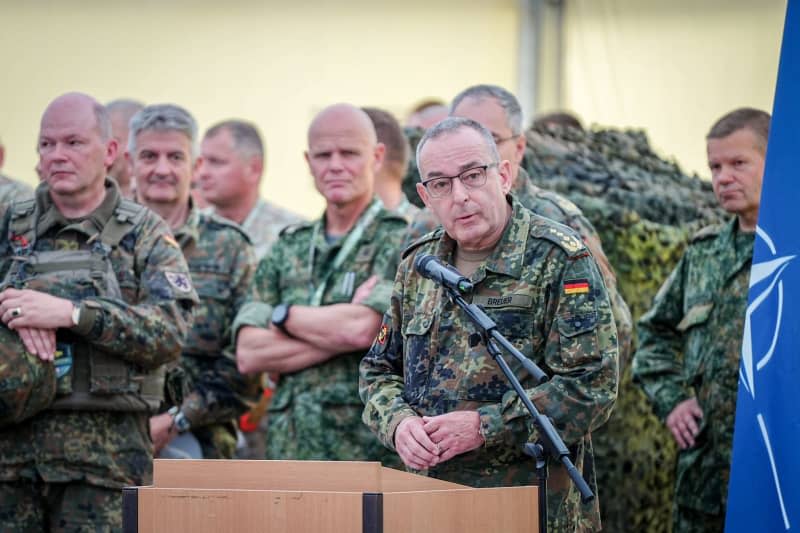The German Armed Forces have deployed their own IT infrastructure as well as thousands of soldiers to Lithuania for the ongoing Quadriga 2024 NATO military exercise.
“Information from, about and on the battlefield is of crucial importance,” a Bundeswehr spokesman told dpa at the Lithuanian military base in Nemenčinė.
“We are therefore providing the IT services and infrastructure to enable the soldiers to communicate securely with each other in battle and to support the military commander in leading the unit by providing reconnaissance results, for example.”
Protected by camouflage nets, mobile IT systems capable of being deployed and networked, decentralized servers and systems for establishing satellite connections are located on the army base some 20 kilometres north-east of the capital Vilnius. The systems were set up and installed in Lithuania for the exercise within a few days.
A unit from the Information Technology Battalion 381, which is normally stationed in the town of Storkow to the south-east of Berlin, arrived in the NATO partner country by sea and land in April.
Around 120 soldiers spread across three locations provide systems for communication, information supply and data transmission – decentralized on site and securely connected to the Bundeswehr systems in Germany.
The IT technology brought along also enables the use of newly introduced 3D situation maps using a system called Augmented Common Operational Picture (ACOP) during the exercise, which provide a better impression of the nature of the battlefield.
German and Lithuanian troops are also practising radar reconnaissance together using a Fuchs armoured transport vehicle with an extendable mast system. Other vehicles offer protection against drones by jamming frequencies.
“We can see that these reconnaissance capabilities, as well as jamming capabilities, are urgently needed,” said the Bundeswehr spokesman, referring to Ukraine’s experience in its defensive campaign against Russia.
Electronic warfare is an “important point,” he said, adding that this is also demonstrated by the fact that the cyber and information space force was recently made one of the four branches of the Bundeswehr.
Germany’s Quadriga exercise, which lasts several months, is part of the current NATO defence exercise Steadfast Defender.
The alliance is mobilizing around 90,000 soldiers over a period of several months to practise raising the alarm, deploying large units and defending against a simulated attacker. Germany is participating with 12,000 soldiers.




